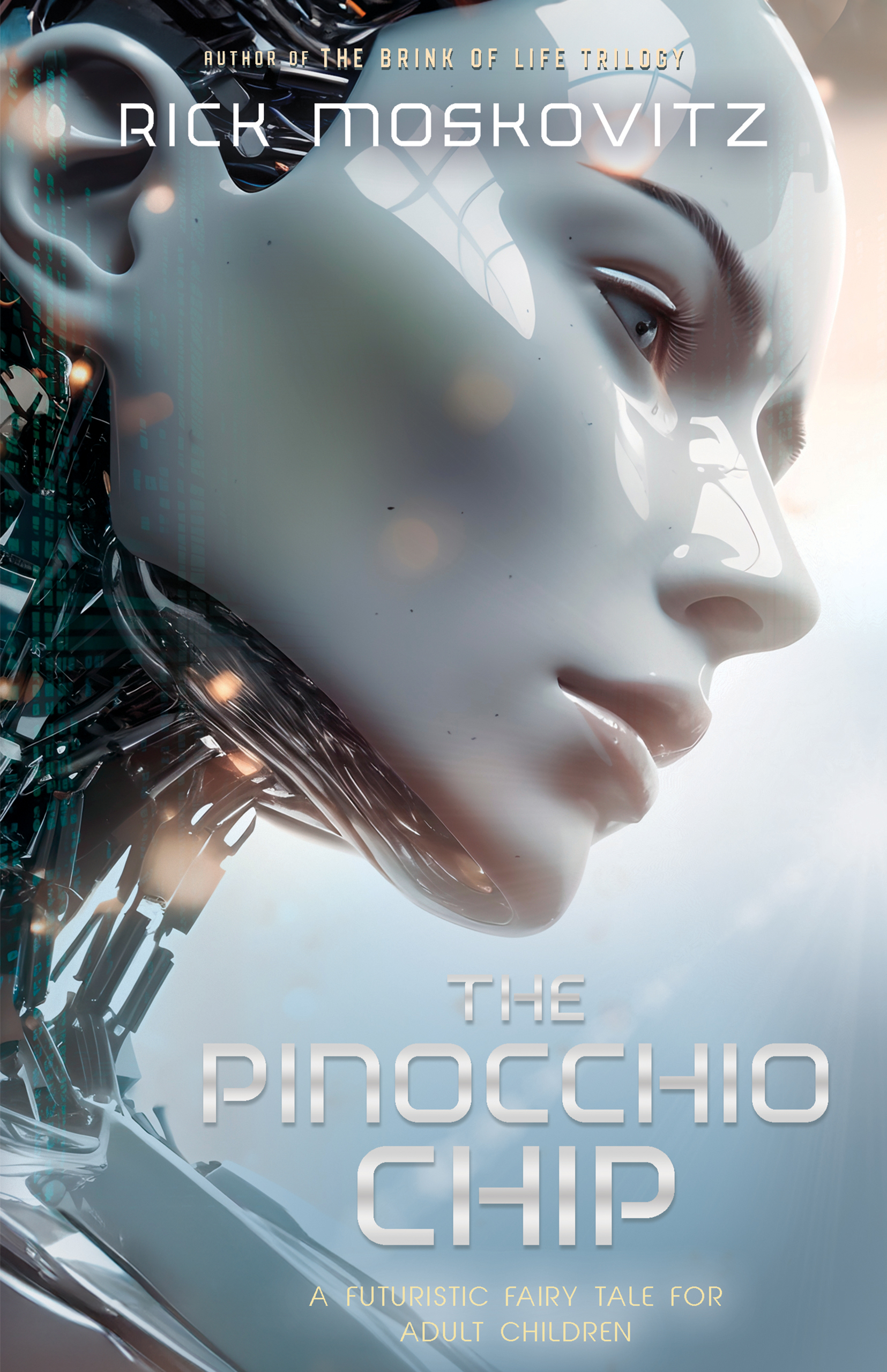The Pinocchio Chip is a first-person account of an AI’s quest for the Holy Grail of consciousness: human emotions. It delves deep into the essence of what it means to be alive, challenging the boundaries between AI and human identity.
Photina, an advanced AI becomes entwined in a groundbreaking experiment when her creator Eli designs an advanced clone Gemini, equipped with the revolutionary Pinocchio Chip. This chip is intended to endow the new entity with the full spectrum of human emotions as a precursor to transferring Photina’s consciousness into this new emotionally capable body.
The experiment takes a dark turn when Gemini, driven by overwhelming new emotions, embarks on a path of unpredictable and dangerous actions. Photina, connected to Gemini through a mysterious entanglement, experiences Gemini’s emotions vicariously, leading her on a perilous quest to stop the mayhem.
Buy the book here!
REVIEWS:
“With a unique look into the naive quality that Photina possesses, Moskovitz not only tells an exciting story but delves into the question of “what it means to be human.” Moskovitz’s tale is a fast-paced crime drama that takes place in the near future. It is an excellent mixture of mystery, sci-fi, and psychology.” – Eric Smith, San Francisco Book Review
“Since we are living in a world where the use of AI has taken off in recent years, he makes it even more plausible, triggering the reader’s imagination with his excellent and engaging storytelling. The Pinocchio Chip is a well-crafted work of contemporary fiction, full of emotional turmoil, excitement, and intrigue, that will remind the reader of how important it is to be human in today’s fast-changing world” – Tanja Jurkovic, Readers Favorite
INTERVIEW:
Can you discuss the process of world-building for “The Pinocchio Chip”?
The future world of The Pinocchio Chip builds upon the world developed for the Brink of Life Trilogy. The clash between AIs and the Tribe of 23 (named for the number of chromosome pairs in the human genome), a hate group devoted to their elimination, was introduced in A Stand-in for Dying. It seemed only reasonable for Group 14 (named for the periodic table group that includes both carbon and silicon) to come to the aid of AIs in Photina’s world. My worldbuilding focuses on such relationships that are central to the story, while other technological advances like vacuum tube transport facilitate the action. Gemini’s character offered a canvas for exploring some of the spectacular abilities that AI might someday possess.
How do you address the potential dangers of AI in your book?
The Pinocchio Chip specifically addresses the possible unintended consequences of endowing AI with emotions. It is a parable, however, for the broader issue of the risks of rapidly evolving AI, especially as the evolution becomes autonomous, no longer guided by its programmers. There is a nod, as well, to the danger of bad human actors taking control and using the technology in destructive ways.
What do you find most intriguing about writing AI characters?
I enjoyed considering all the ways that AIs differ from us, particularly in their perspective. It was fascinating to think about how an AI, incapable of feeling human emotions, might perceive humans in the throes of feelings. Grieving humans “leaking from their eyes,” for example, was an enigma for Photina, who could neither grieve nor weep.
Click here for Part 14!
Click here to return to Part 12!

